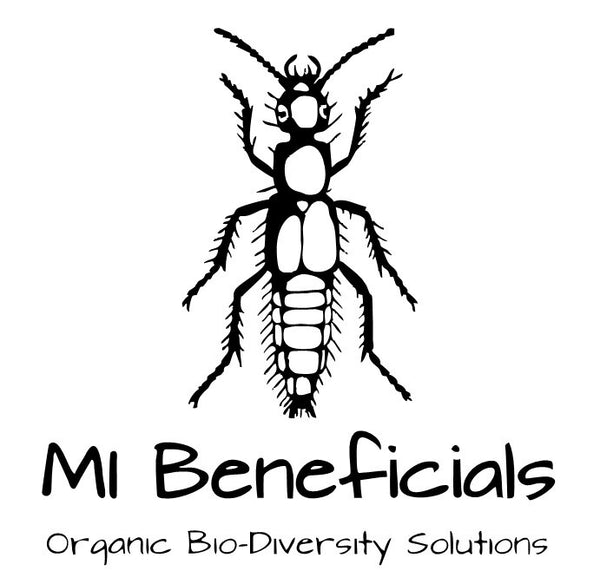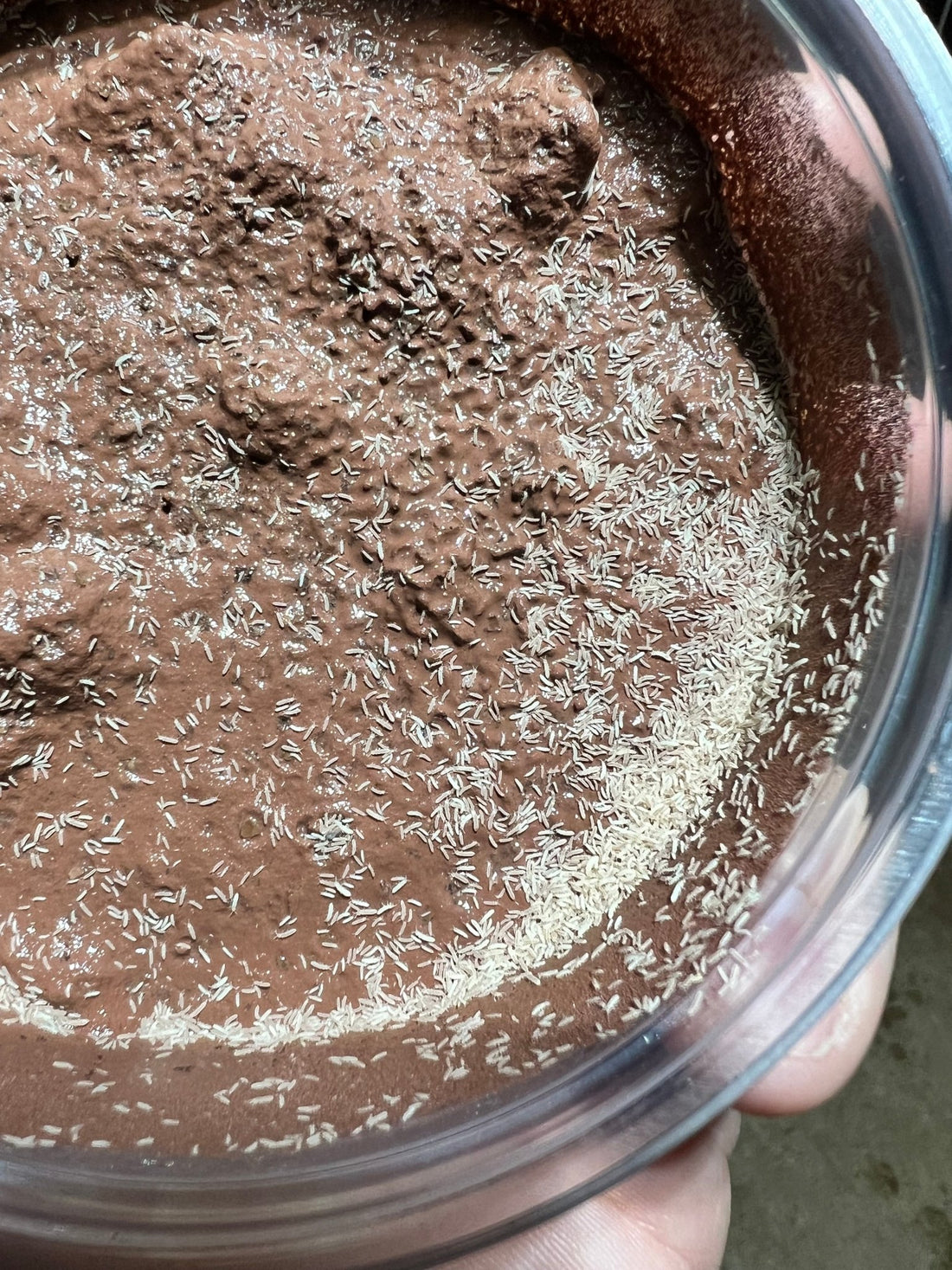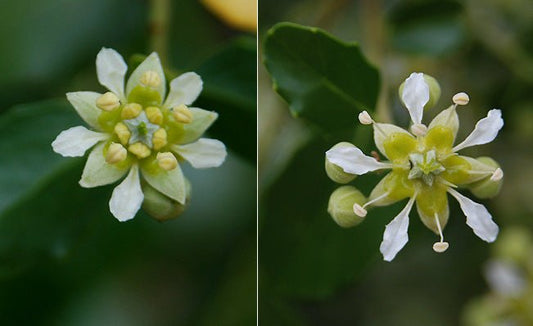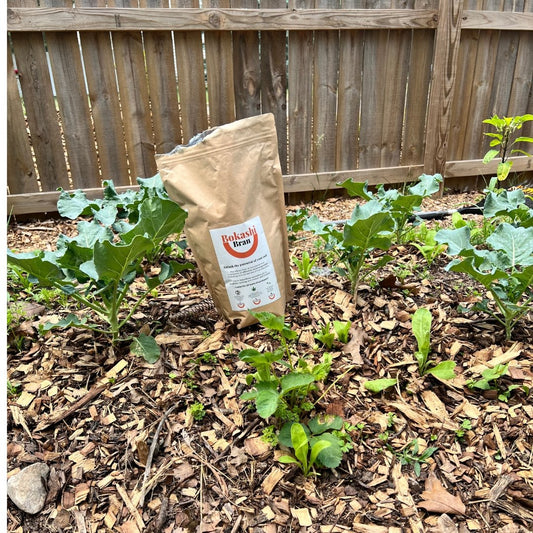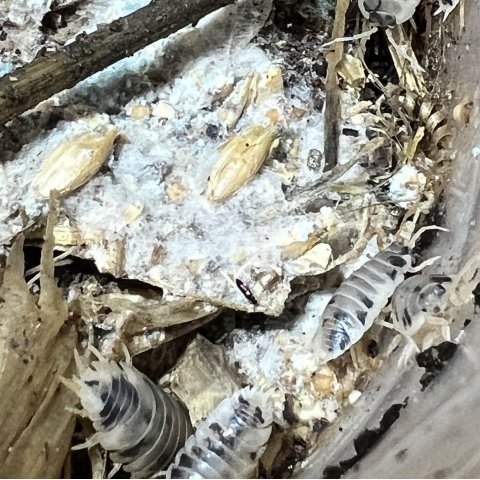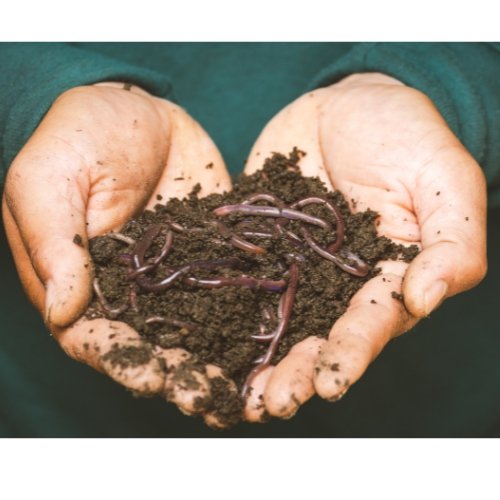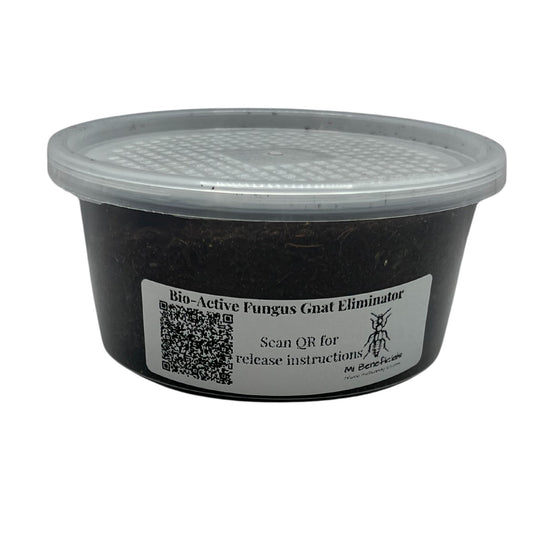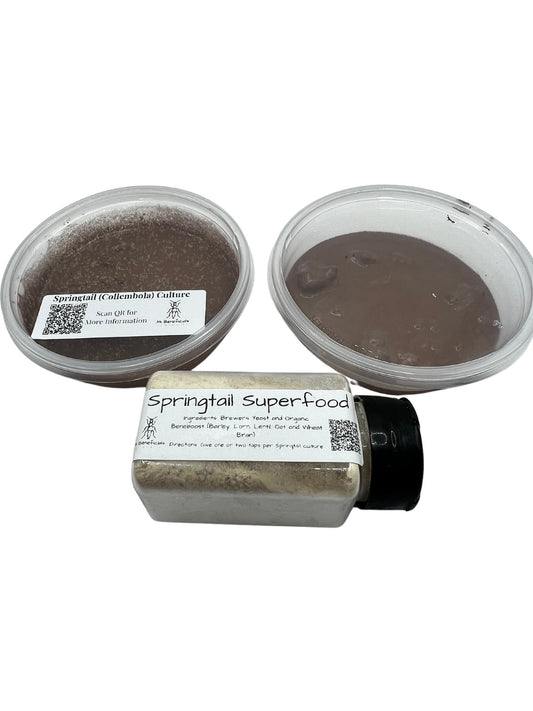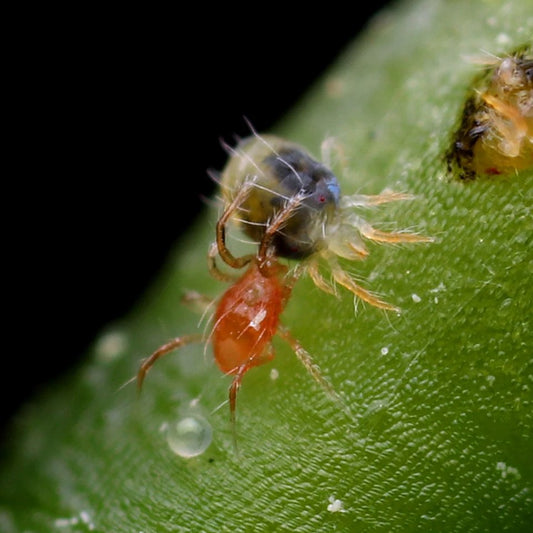Considerations Before You Start
Container Choice
We have experimented with several different sizes and kinds of Springtails (Collembola or Folsomia candida) culture containers. There is such a thing as too big for a culture container and for that reason, we recommend using between a 6oz Pro-Kal culture to no bigger than a 2.2 quart tuperware container.

Substrate Choice
There are several options for substrate when culturing Springtails (Collembola or Folsomia candida); Clay, Charcoal (with water) or a coco/peat base.
We have found that the best substrate to breed Springtails (Collembola or Folsomia candida) is on a culture clay: moisture is easiest to regulate, Springtails are easiest to extract and it is the fastest way to expand populations. This guide is for culturing Springtails using Clay because of those reasons.
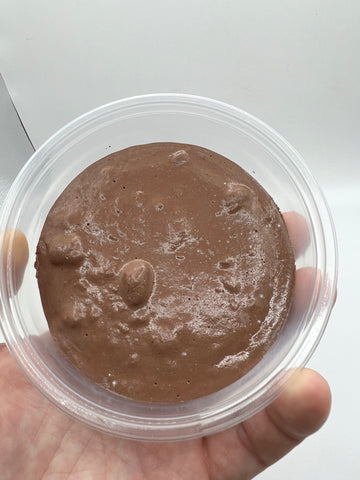
Calcium Bearing Clay in a 6oz Culture Cup
Container Ventilation Choice
You can either drill pinholes in your springtail cultures or have them air-tight.
This guide is tailored to having an air-tight culture and we will go further into why later in this article.
Food Choice
Our go-to food choice is MI Beneficials Springtail Food: a 50/50 mix of brewers yeast and powdered Beneboost (Organic Barley, Lentil, Blue Corn, Oatmeal and Wheat Bran).
Other options include: Pure Brewers Yeast (nothing mixed in), dry rice grains or really any organic matter that is moistened.
We use our own Springtail Superfood because it minimizes the risk of introducing harmful pathogens into your relatively delicate Springtail Cultures. We highly recommend storing this food and any other Springtail food in an air-tight bag inside the freezer.
A Note On Water
Keeping your cultures moist but not completely submerged is key to maximum reproduction rates (More on this later).For this reason, we recommend having a hand sprayer dedicated to DISTILLED WATER ONLY.
Setting Up Your Container
Preparing Your Container
We recommend cleaning out your new culture containers with soap and water whether they are being re-used or are brand new tuperware. You would be surprised how much dirt and grime is on new tuperware containers. The only exception is if you are using a food ready container like the pro-kal 6oz containers.
Mixing The Clay (1 Part Clay to 2 Parts Water)
If you are mixing powdered clay, we recommend starting off with about 1 parts powdered clay to 2 parts of water. You can use a mixer, but we use our hands, and really get in to it, to mix up the lumps and achieve our perfect consistency. Generally, we will add more water to the 1:2 ratio to achieve that near-runny consistency.
Pro Tip: When mixing clay, our goal is to have a consistency that we can scoop with a cup, plop into the new culture and then shake the container for it to level out smooth. We mix to consistency and not necessarily to a specific ratio. Play around with it and keep extra powder on hand in case you make it too thin, you can always add more clay.
Clay is messy and can be wasteful to work with especially when you have to touch it too many times. We recommend reusing a cup and plopping the clay right in the middle of the container. As mentioned before, by getting the consistency right, you can help yourself in this step because now you can shake the container to level it out.
Add Your Springtails (Collembola or Folsomia candida)
We recommend purchasing a well populated Springtail (Collembola or Folsomia candida) Culture, from a reputable source, to start your new cultures.
When inoculating a new container, regardless of size, we recommend taking only 1/2 to 2/3rd of the existing springtails from their culture and leaving the remaining to continue reproducing in that culture. We want the starter culture to keep reproducing at a high-rate while our new container gets up to speed, thus it is important not to take all the springtails from the starter by aggressively tapping them out.
Our starter cultures come absolutely loaded with Springtails, and are ready to be split into new cultures without having to wait.
Maintaining Your Springtail Culture
Every 2-3 days is ideal for maintenance: tapping the lid a couple times*, opening lids, checking moisture (small spritz if necessary), a small dusting of food, close lid.
*Expert Tip: Tapping the lid is a smart idea to knock the wandering Springtails down into the substrate without losing many upon opening your container. When you open that container, they will start to jump around and having them near the rim of your container can cause some unnecessary loss.
Providing Air Exchanges
If you don't provide an air exchange (fancy term for open the container) ever 2-3 days, Springtails will start to slow down due to lack of oxygen and excess CO2 buildup in your airtight containers.
To ensure the highest-level of reproduction, we have found the 3 day interval is the absolute best for opening your culture to provide air which also coincide with the optimal feeding schedule.
Pro Tip: Springtails thrive in higher CO2 to oxygen environments. This is why we believe the 3 day interval for air exchange is optimal in an air-tight container. This allows for an optimal balance of CO2 and oxygen which will result in higher levels of reproduction.
Feeding
We recommend feeding with something that is fine, dried powder and is not raw food material (Checkout Our Springtail SuperFood). We load our food into a spice jar which allows for easy distribution and air-tight storage. We slightly adjust our feeding based on the size of the Springtail population, but only by a shake or two of the spice jar.
If you notice food particles left from the previous feeding, we recommend waiting another day or two to feed, or until those particles disappear. Small food particles will disappear relatively quickly which is another reason we use a powdered food.
Keeping It Moist
Moisture is crucial in rearing Springtails (Collembola or Folsomia candida), especially if you are looking for high level cultures so monitoring it is important. Using distilled water is important as Springtails are sensitive organisms that can have adverse affects to chlorine and chloramine in your tap water.
This is another area where having a closed container (non-vented) will be an advantage because you can slow moisture evaporation and ensure optimal humidity for your Springtails.
To check our moisture, we look around the edges of the culture or in any divuts to see if there is a little standing water or moist spots. By tilting the container you can check to see if there is a little water run.
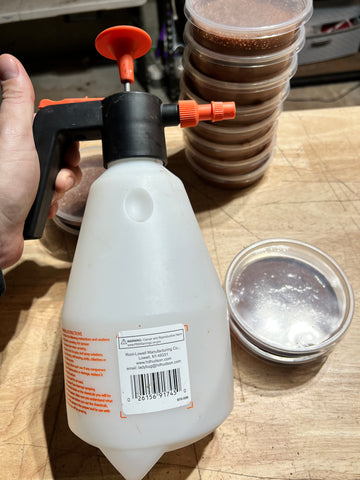
When adding moisture, we do a very small mist of water as we do not want to cover the entire clay surface with standing water. Keep checking your cultures for moisture each time and make small adjustments.
Storage
Ideal conditions for reproduction of Springtails (Collembola or Folsomia candida) is 70-80 degrees Fahrenheit, complete darkness is not totally necessary, but definitely keep out of direct light or anywhere in the house that could see drastic temperature fluctuations.
You won't have to worry about ambient relative humidity if you are using air-tight cultures as we recommend.
Monitoring Your Springtail Culture
Springtails (Collembola or Folsomia candida) are capable of reproducing quickly in the right environments, thus it is very important to keep an eye on your population size and adjust accordingly.

Image Credit to Bringing Ecology into Toxicology Research Project
Like Red Wigglers (Eisenia fetida), Springtails will limit reproduction in high competition/high population environments, thus keeping those culture populations regulated will ensure you are operating at the highest level possible.
Harvesting From Your Springtail Culture
Choosing when to harvest Springtails (Collembola or Folsomia candida), can be on an as-needed basis for whatever you are using them for. As long as you leave some in your starting culture, you can really take them at any time.
Pro Tip: If you're rearing Springtails on a production level, the best approach is to wait until you see a "stacking" population around the edges of the container. By stacking, we mean a visible mass of Springtails stacked around the edges.
How To Harvest Your Springtails
We harvest by tipping and lightly tapping the culture container to concentrate the Springtails in one corner at a 90 degree angle. When they are piled up in a corner, they react more like fluid and are easier to tip out into a new container.
